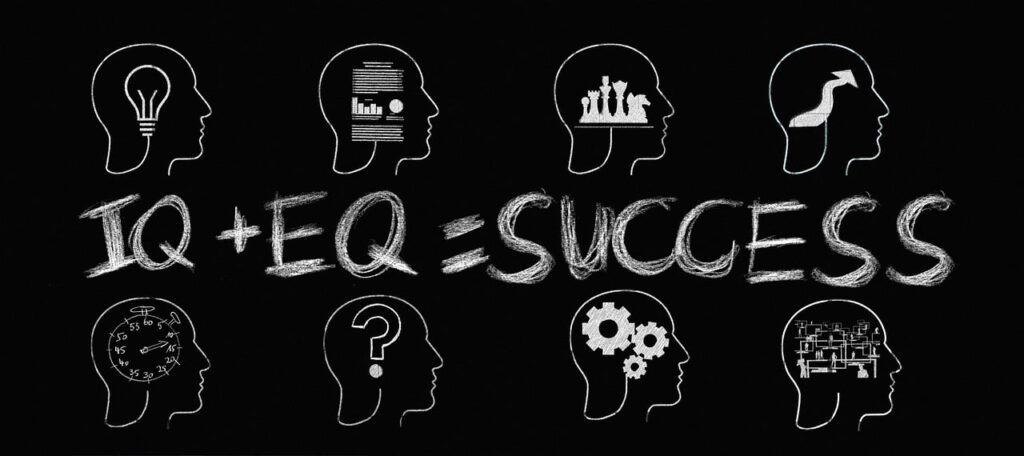In the last article, we decoded The Millionaire Innovation Blueprint — the 7-step system self-made millionaires use to transform ideas into income.
But here’s the truth:
You can’t innovate externally until you evolve internally.
Innovation Mindset isn’t just a skill.
It’s a state of mind – a rewired brain trained to question, connect, and create.
“The most valuable real estate in the world is the six inches between your ears.”
Every great innovation — from Apple’s iPhone to Airbnb’s disruption — began not in a lab, but in a mind trained to think differently.
Today, you’ll learn how to build that mind ~ step by step.
We’ll decode the neuroscience, daily habits, and mental models millionaires use to train their brains for breakthrough ideas.
If you’ve ever wondered why some people see billion-dollar opportunities where others see nothing – this is your answer.
PART 1: The Neuroscience of Innovation
Your Brain Is a Pattern Machine
The human brain is a 1.3 kg pattern-recognition engine.
It constantly looks for connections, and that’s the birthplace of innovation.
According to neuroscience, innovation mindset happens in the “default mode network” ~ the part of the brain active when you’re not focused on tasks. It’s where creativity thrives.
That’s why your best ideas show up:
- In the shower 🚿
- On a walk 🚶
- Before sleep 😴
Your subconscious connects dots while your conscious mind rests.
“Genius is just a higher pattern recognition speed.”
Millionaire innovators deliberately feed their brains with diverse information, so when the mind wanders, it forms new and profitable patterns.
How Millionaires Hack the Brain for Innovation
- They switch from focus to flow
They alternate deep work (logic) with relaxation (creativity). Elon Musk often walks and brainstorms away from his desk. - They seek novelty
Neuroscience shows novelty increases dopamine — the reward chemical — making your brain more curious and creative. - They visualize outcomes
Visualization activates the same neural pathways as doing. Olympians use it. So do millionaire innovators. - They cross-pollinate knowledge
Innovation mindset lives at intersections — tech + art, finance + psychology, fashion + AI.
Example:
Steve Jobs merged calligraphy and computing → Apple’s iconic design DNA.
Your Move:
Feed your brain outside your niche. Read broadly. Mix disciplines. Innovation emerges when opposites collide.
Neuroplasticity: How Millionaires Rewire for Innovation
Your brain isn’t fixed.
It’s plastic – constantly rewiring based on what you think, learn, and do.
Millionaires know this. That’s why they build mental fitness routines to strengthen their innovation mindset circuits.
Think of your brain like a muscle:
- Curiosity = Stretching
- Reflection = Strength training
- Action = Repetition
Example: Elon Musk’s “Learning Transfer” Superpower
Elon Musk built Tesla, SpaceX, Neuralink, and The Boring Company.
How? By mastering learning transfer – taking mental models from one field (physics) and applying them to another (business).
That’s neuroplasticity in action.
“You can learn any skill if you understand its first principles.” — Elon Musk
Millionaire Script Tip:
Train your brain like a polymath. Study finance, tech, psychology, art, and culture.
Innovation = Cross-disciplinary insight.
The 3 Innovation Brain States
According to cognitive neuroscience, every innovative mind cycles through three brain states:
| State | Description | Millionaire Behavior |
|---|---|---|
| 🧩 Divergent | Open, creative, idea-generation | Brainstorming 10x ideas |
| ⚙️ Convergent | Logical, analytical, solution-focused | Filtering profitable ideas |
| 🔄 Reflective | Resting, subconscious processing | Journaling, meditation, walks |
Millionaires flow between all three.
They brainstorm wildly, filter ruthlessly, then rest strategically.
Average thinkers stay stuck in one mode.
Innovators dance between all three.

PART 2: The Habits That Build an Innovative Brain
Innovation Mindset is not what you do occasionally, it’s what you practice daily.
Below are 10 proven habits that train your brain to think like a millionaire innovators.
1. Morning Curiosity Hour
Instead of scrolling social media, millionaire innovators feed their minds.
- 📚 Read outside your field
- 🎧 Listen to podcasts (science, design, business)
- ✍️ Journal “What surprised me today?”
“Curiosity is the spark plug of innovation.”
Example:
Warren Buffett reads 500 pages daily. Bill Gates takes “reading vacations.”
Both became billionaires – not just investors, but pattern-recognizers.
2. The Idea Journal
Every innovator keeps a capture system – a notebook, Notion page, or voice memo.
Thomas Edison recorded over 3,000 notebooks of experiments.
Richard Branson carries a notebook everywhere.
“The faintest ink beats the strongest memory.”
💡 Your Move:
- Log every idea, even bad ones.
- Review weekly.
- Combine two weak ideas into one strong innovation.
Innovation mindset grows in captured thoughts.
3. Strategic Stillness
Meditation and mindfulness aren’t just for monks, they’re innovation tools.
Studies from Harvard show meditation increases gray matter in the prefrontal cortex – the part of the brain responsible for creativity and decision-making.
“Silence is a space where big ideas whisper.”
Example:
Ray Dalio (Bridgewater Associates founder) credits Transcendental Meditation for his clarity and innovative investment models.
Practice 10–15 minutes daily.
Still mind → sharp innovation.
4. The 10x Question
Millionaire innovators think exponentially.
They don’t ask “How can I improve this by 10%?”
They ask, “How can I make this 10x better?”
That single shift triggers radical innovation.
Example:
Google X’s “Moonshot Factory” asks teams to solve problems 10x better, not 10% cheaper.
That’s how projects like self-driving cars (Waymo) began.
Your Move:
Every week, pick one system or idea and ask:
“What would this look like if it was 10x faster, cheaper, smarter, or simpler?”
5. Daily Reflection
Millionaires don’t just act – they analyze.
At day’s end, they ask:
- What did I learn today?
- What confused me?
- What inspired me?
“Reflection turns experience into insight.” — John Maxwell
Example:
Jeff Bezos calls this “Day 1 Thinking” — staying curious, experimental, and reflective daily.
6. Micro-Experiments
Innovation mindset thrives on small tests.
Millionaires test ideas with low risk, high learning.
Instead of debating, they experiment.
Example:
Zappos tested online shoe sales by posting photos, buying from local stores, and shipping manually.
That $0 startup test became a $1.2B exit.
Your Move:
Run one micro-test weekly: a tweet thread, a landing page, a cold email.
Innovation = Experimentation × Speed.
7. Vision Visualization
Neuroscience confirms: visualization activates the same brain regions as doing.
Millionaires see their innovations before they exist.
“Everything is created twice — first in the mind, then in reality.”
Example:
Arnold Schwarzenegger visualized his physique, movie roles, and success before each achievement.
So did Jim Carrey, who wrote himself a $10M check before fame.
Visualize your future company, impact, and wealth daily.
The brain starts aligning action with imagination.
8. Feedback Loops
Innovators don’t wait for validation. They seek feedback early.
They understand:
“Feedback is a mirror for blind spots.”
Example:
Reid Hoffman (LinkedIn) says: “If you’re not embarrassed by your first product, you launched too late.”
Your Move:
Create a Feedback Circle — 3 people who give honest input on your ideas.
Iteration is innovation’s twin.
9. Mental Model Mastery
Mental models = shortcuts for better thinking.
Millionaires collect them like tools.
Some top ones:
- First Principles (Elon Musk): Break problems into basics, rebuild from truth.
- Inversion (Charlie Munger): Ask, “What would make this fail?” then avoid it.
- Second-Order Thinking (Jeff Bezos): Anticipate ripple effects.
- Ockham’s Razor: Simpler solutions often win.
Example:
Munger says, “To the man with only a hammer, everything looks like a nail.”
Millionaires carry full toolboxes.
10. Curate Inputs, Protect Attention
Innovation requires mental clarity.
Millionaires protect their attention from noise, doomscrolling, and distraction.
They curate high-value input — books, mentors, data — and cut the rest.
“Your mind is a garden. Protect it from weeds.”
Example:
Naval Ravikant consumes selectively: philosophy, tech, science. No gossip.
His clarity drives deep innovation in startups and investing.
Your Move:
Audit your digital diet weekly.
Unfollow noise. Follow knowledge.
READ ALSO: Top 15 Business Ideas to Start with 100 Dollars In 2025
PART 3: The Mental Models Millionaires Use to Innovate
Mental models are cognitive frameworks that simplify complex thinking.
They’re like software upgrades for your brain.
Here are 7 innovation mindset models you can apply today 👇
1. First Principles Thinking
Ask: What is fundamentally true? Build from there.
Example:
Elon Musk: “A battery is just a collection of materials. Let’s re-engineer it cheaper.”
That mindset birthed Tesla’s cost advantage.
Use it:
Strip assumptions. Solve from scratch.
2. Inversion
Ask: What would guarantee failure? Do the opposite.
Example:
Amazon inverted retail:
Instead of limited shelves, offer infinite inventory.
Use it:
List obstacles, reverse-engineer success.
3. Second-Order Thinking
Ask: Then what?
Look beyond immediate outcomes.
Example:
Airbnb knew lower hotel prices → more travel → more hosts → network effect.
Use it:
Predict ripple effects before acting.
4. Latticework of Knowledge
Combine mental models from multiple fields.
Example:
Steve Jobs fused calligraphy + tech + design → Apple.
Elon Musk fused physics + economics + AI → Tesla.
Use it:
Read 1 book per month outside your field.
5. The 80/20 Rule (Pareto Principle)
80% of results come from 20% of efforts.
Millionaires double down on high-impact actions.
Example:
Tim Ferriss built his career by focusing on high-leverage systems — one bestseller → multiple income streams.
Use it:
Audit your day. Amplify what works. Eliminate what doesn’t.
6. Leverage Thinking
Replace time with tools, people, or media.
“Code and content scale infinitely; labor doesn’t.” — Naval Ravikant
Use it:
Automate. Delegate. Create digital assets.
7. Compounding Curiosity
Curiosity compounds like interest.
Each new insight multiplies future connections.
Example:
Jeff Bezos explored everything from space to AI to e-commerce. Each venture fed the next.
Use it:
Explore relentlessly. Curiosity is the seed of innovation.
PART 4: Real-World Examples of the Innovation Mindset
Let’s see this mindset in motion 👇
1. Elon Musk: The Polymath Innovator
- Neuroscience: Constant mental simulation
- Habit: Deep reading across disciplines
- Model: First Principles + Transfer Learning
- Result: Multiple billion-dollar companies (Tesla, SpaceX, Neuralink)
2. Oprah Winfrey: The Empathic Innovator
- Neuroscience: Emotional intelligence, mirror neurons
- Habit: Deep listening and journaling
- Model: 80/20 Focus on purpose-driven impact
- Result: Created OWN Network, empire built on storytelling
3. Jeff Bezos: The Systems Innovator
- Neuroscience: Long-term thinking (prefrontal dominance)
- Habit: “Regret minimization framework” journaling
- Model: Second-order thinking, compounding scale
- Result: Built Amazon’s infinite ecosystem
4. Rihanna: The Creative Innovator
- Neuroscience: Dopamine-driven novelty seeking
- Habit: Cross-industry learning (music, fashion, beauty)
- Model: Leverage Thinking (brand + partnerships)
- Result: Fenty Empire worth $1.4B
5. Naval Ravikant: The Philosophical Innovator
- Neuroscience: Meta-cognition and detachment
- Habit: Reading + reflection
- Model: Leverage + Compounding Curiosity
- Result: AngelList, personal brand, generational wealth
PART 5: How to Build Your Innovation Mindset
Here’s your 7-Day Innovation Brain Training Plan:
| Day | Focus | Task |
|---|---|---|
| 1 | Curiosity | Read 1 topic outside your field |
| 2 | Capture | Start an idea journal |
| 3 | Reflection | 15-min meditation + review |
| 4 | Action | Run 1 micro-experiment |
| 5 | Connection | Discuss 1 idea with peers |
| 6 | Leverage | Automate or delegate 1 task |
| 7 | Vision | Visualize your 10x future |
Repeat weekly. Each loop strengthens neural pathways for innovation.
Conclusion: You Don’t Need a New Market — You Need a New Mind
Innovation isn’t just about ideas.
It’s about how you think about ideas.
The most innovative millionaires aren’t born different – they train differently.
They feed their curiosity.
They manage their mind.
They connect unlikely dots.
They act fast, reflect often, and never stop learning.
“Your mind is your first startup. Train it. Fund it. Scale it.”
Master the innovation mindset, and the next big idea could be yours.
FAQ: Innovation Mindset of Millionaires
Q1. Can I train my brain to be more innovative?
Yes. Neuroplasticity ensures your brain rewires through practice. Consistency matters more than talent.
Q2. What if I don’t have big ideas yet?
Start by asking better questions daily. Curiosity precedes creativity.
Q3. How long before I see results?
Expect noticeable shifts in 30–60 days of consistent journaling, reflection, and experimentation.
Q4. Is innovation only for entrepreneurs?
No. Innovators thrive in careers, art, content creation, and investing. Innovation = creative problem-solving.
Q5. What books build an innovation mindset?
- Think Like a Rocket Scientist by Ozan Varol
- The Innovator’s DNA by Jeff Dyer
- Loonshots by Safi Bahcall
- Range by David Epstein
- Principles by Ray Dalio
Q6. How can I apply this daily?
- Morning curiosity hour
- Capture 3 ideas
- Reflect 10 minutes
- Act on 1 micro-test
Q7. What’s next after mindset?
Day 4 → “The 7 Innovation Models That Create Millionaires (and How to Copy Them)” — we’ll decode monetization frameworks behind world-changing ideas.



